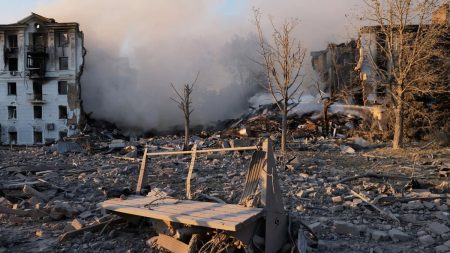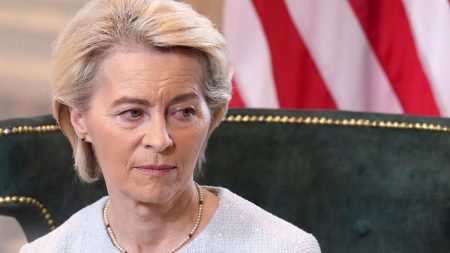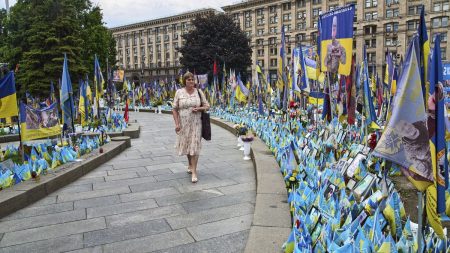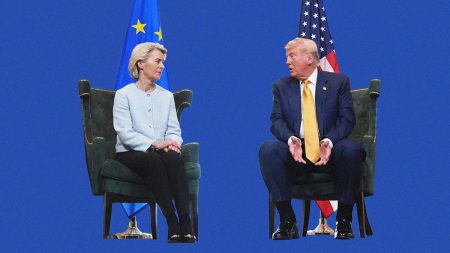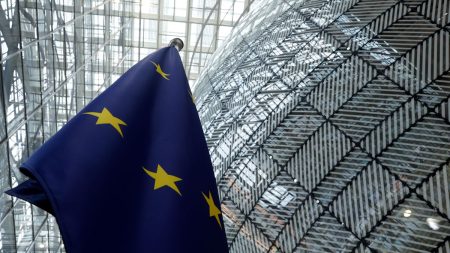The European Union has intensified its sanctions against Russia, targeting the “shadow fleet” of aging tankers used to circumvent Western oil restrictions. This fleet, composed of older, often uninsured vessels, poses a significant environmental risk to European waters due to their subpar condition. The sanctions also extend to several Chinese companies allegedly involved in supporting Russia’s drone production. This 15th sanctions package since the invasion of Ukraine aims to further constrict Russia’s revenue streams crucial for financing its war efforts. While welcomed by Ukraine, concerns remain about the pace of sanctions implementation. Kyiv urges the EU to swiftly prepare the next round of measures, targeting sectors like energy and including more impactful restrictions. This package signifies the first sanctions agreed upon during Hungary’s EU Council presidency, a period initially met with apprehension due to Hungary’s traditionally close ties with Moscow.
Despite some concerns about potential delays caused by Hungary’s leadership, positive signals are emerging from the new European Commission, particularly regarding its commitment to ending the EU’s reliance on Russian energy. Cooperation between Ukraine and various EU bodies is expanding, focusing on diverse sanctions streams including financial, energy (specifically LNG and Rosatom), and individual designations. The escalating collaboration between Russia, North Korea, and Iran necessitates a more dynamic and robust sanctions regime, a challenge the EU is actively addressing. The focus on diversifying targets and expanding collaboration reflects a strategic shift in the sanctions approach, recognizing the evolving geopolitical landscape and the need for a multi-pronged strategy to effectively pressure Russia.
Looking ahead, expectations are high for continued and even strengthened sanctions from the incoming US administration. The understanding of the critical role oil revenues play in sustaining Putin’s war effort fuels hopes for continued transatlantic cooperation in applying further pressure on the Russian regime. The emphasis on targeting this financial lifeline highlights a shared recognition of its strategic importance in undermining Russia’s ability to finance its military operations. This transatlantic cooperation underscores the importance of a unified front in confronting Russia’s aggression and maintaining pressure through targeted economic measures.
While the effectiveness of past sanctions has been debated, there are signs that the cumulative impact is beginning to strain the Russian economy, albeit unevenly. While the Russian economy experienced growth in certain sectors, fueled by military production, other areas are showing signs of significant distress. High interest rates, a weakened ruble, investment challenges, financing difficulties, and labor shortages all point towards underlying economic vulnerabilities. This bifurcation of the Russian economy reveals a growing imbalance, where military priorities are being sustained at the expense of other vital economic sectors.
The Russian economy is essentially operating on a two-track system. One track, the military industrial complex, is functioning relatively well, producing arms and ammunition. However, the other track, encompassing the broader civilian economy, is struggling under the weight of sanctions, financial instability, and resource constraints. This disparity highlights the unsustainable nature of Russia’s current economic model and the long-term consequences of prioritizing military spending over broader economic stability. This unsustainable situation is putting increasing pressure on the Russian government, which faces a difficult choice between curtailing military spending or risking the collapse of the civilian economy.
The escalating pressure on the Russian economy presents a critical juncture. The continued prioritization of military expenditure, without addressing the underlying issues in the broader economy, threatens to lead to a wider economic collapse. This precarious balancing act, with its potential for significant destabilization, underscores the long-term risks of Russia’s current economic trajectory. The international community continues to monitor the situation closely, recognizing the potential for further sanctions and the need for a coordinated response to address the evolving challenges posed by Russia’s actions.





